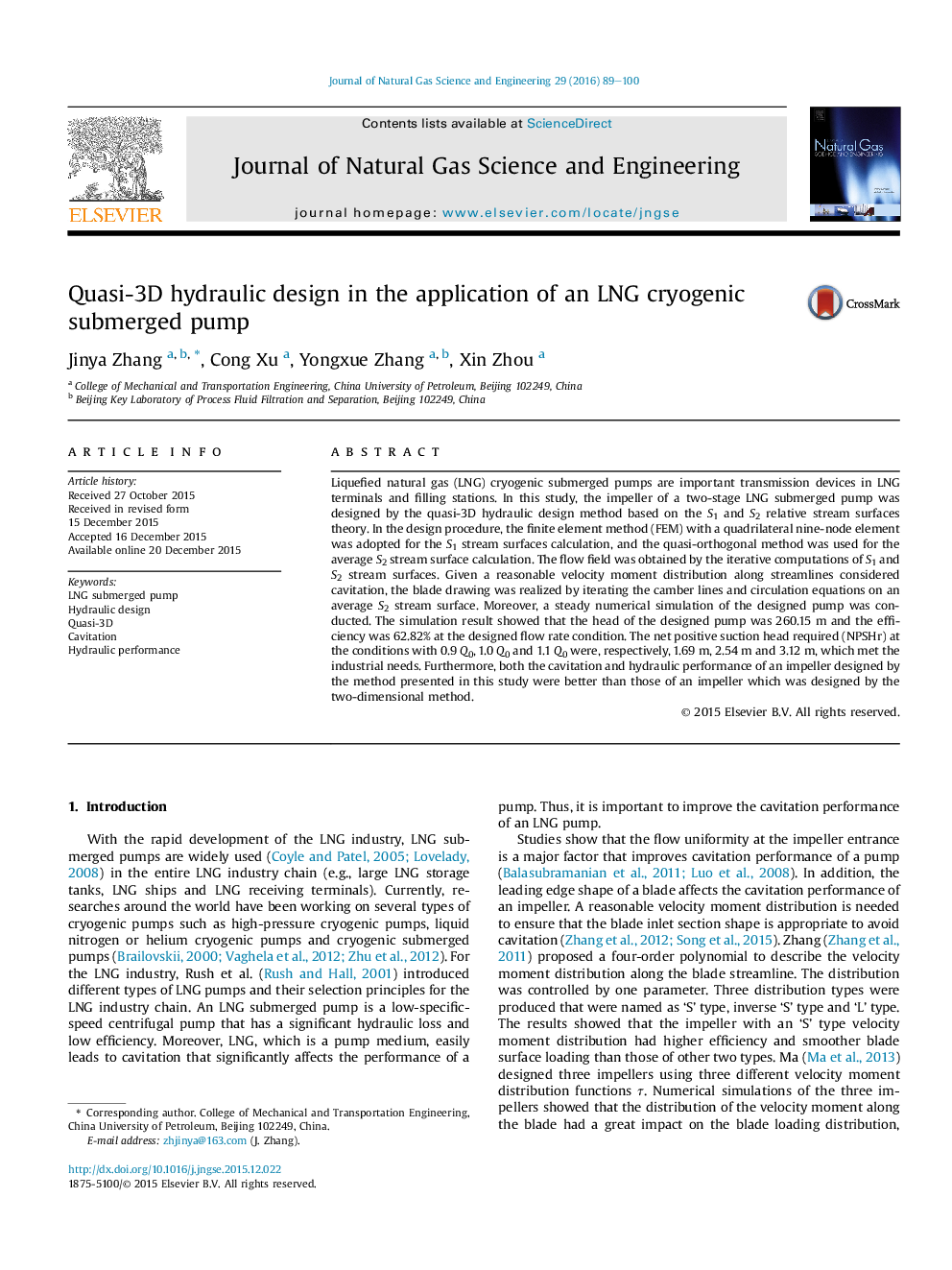| Article ID | Journal | Published Year | Pages | File Type |
|---|---|---|---|---|
| 1757342 | Journal of Natural Gas Science and Engineering | 2016 | 12 Pages |
•Quasi-3D hydraulic design method is presented for impeller design of a LNG pump.•‘S’ type velocity moment distribution is adopted to improve cavitation performance.•Control method with four points is presented to shape the curves of shroud and hub.
Liquefied natural gas (LNG) cryogenic submerged pumps are important transmission devices in LNG terminals and filling stations. In this study, the impeller of a two-stage LNG submerged pump was designed by the quasi-3D hydraulic design method based on the S1 and S2 relative stream surfaces theory. In the design procedure, the finite element method (FEM) with a quadrilateral nine-node element was adopted for the S1 stream surfaces calculation, and the quasi-orthogonal method was used for the average S2 stream surface calculation. The flow field was obtained by the iterative computations of S1 and S2 stream surfaces. Given a reasonable velocity moment distribution along streamlines considered cavitation, the blade drawing was realized by iterating the camber lines and circulation equations on an average S2 stream surface. Moreover, a steady numerical simulation of the designed pump was conducted. The simulation result showed that the head of the designed pump was 260.15 m and the efficiency was 62.82% at the designed flow rate condition. The net positive suction head required (NPSHr) at the conditions with 0.9 Q0, 1.0 Q0 and 1.1 Q0 were, respectively, 1.69 m, 2.54 m and 3.12 m, which met the industrial needs. Furthermore, both the cavitation and hydraulic performance of an impeller designed by the method presented in this study were better than those of an impeller which was designed by the two-dimensional method.
